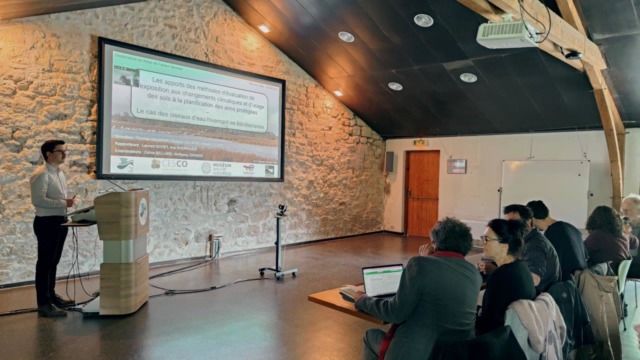Fabien Verniest [1], Ph.D. student in Tour du Valat has successfully defended April, 4 2023, his doctoral thesis entitled:
The contribution of assessment methods of exposure to climate and land-use changes to protected areas planning – The case of Mediterranean wintering waterbirds

Fabien Ph. D. was supervised by Dr. Thomas Galewski, Tour du Valat Research Director, Dr. Isabelle Le Viol, Senior Lecturer at the Muséum National d’Histoire Naturelle (CESCO) and Pr. Romain Julliard, Professor at the Muséum National d’Histoire Naturelle (CESCO).
Fabien is currently studying the exposure of waterbird communities to rising sea levels and characterising reservoir waterbird communities in the Mediterranean. He is open to any post-doctoral proposals.
Access Fabien Versniest Ph.D. details. [2]
Abstract:
Climate change and land-use changes are major direct drivers of biodiversity loss, whose future impact must be anticipated. Mediterranean wetlands, which host an outstanding biodiversity, are highly vulnerable to these drivers but are not sufficiently targeted by conservation measures. The designation of new protected areas in these habitats can locally reduce the impact of climate and land-use changes on biodiversity, and especially on waterbird communities. It is necessary to identify wetlands of importance for biodiversity conservation for which the future changes are expected to be most severe in order to make the most of the effectiveness of protected areas. Assessing the exposure of Mediterranean wetlands to these drivers can help anticipate future variations of intensity and distribution of climate and land-use changes under several pathways of our societies.
In this thesis, I aimed to assess whether existing protected areas cover the wetlands of importance for conservation most exposed to future climate and land-use changes in the Mediterranean region, and to identify where to designate new protected areas in order to lessen the future impact of these two drivers on waterbird communities. To this end, I computed various
metrics of exposure to these drivers, derived from late 21 st century projections under four future scenarios used by the IPCC. These metrics were intersected with winter abundance data of 151 waterbird species collected over 25 years at 5891 sites (25 countries) as part of the International Waterbird Census.
First, I highlighted the high exposure to climate and land-use changes of Key Biodiversity Areas – sites of importance for biodiversity conservation – in the Mediterranean region, especially in countries where the protection of this network is low. In order to complement our knowledge on sites of importance for waterbirds, I subsequently applied three criteria of identification of
wetlands of international importance to winter count data. As a result, I identified 161 sites of international importance for waterbirds whose status is not officially acknowledged, of which 95 are not protected. Then, I assessed the potential thermal adjustment limitations of waterbird communities to future temperature changes by combining their thermal specialization with their exposure to climate warming and natural habitat conversion. I thereby demonstrated the relevance of the location of existing protected areas that should overall be able to facilitate the future thermal adjustment of waterbird communities. However, I also identified 490 non-protected wetlands at risk, including 32 of international importance for waterbirds. Finally,
assessing the exposure of coastal wetlands to sea-level rise highlighted the high threats to these sites, especially those protected and of international importance for waterbirds.
Taken together, these exposure assessments to climate and land-use changes highlighted the overall relevance of the location of existing protected areas network in the Mediterranean region. However, these methods also identified important protection gaps of highly exposed wetlands of importance for waterbird conservation, especially in Maghreb countries. The results of this thesis could help guide the implementation of protection measures in Mediterranean wetlands and thereby improve the conservation of waterbird communities.
